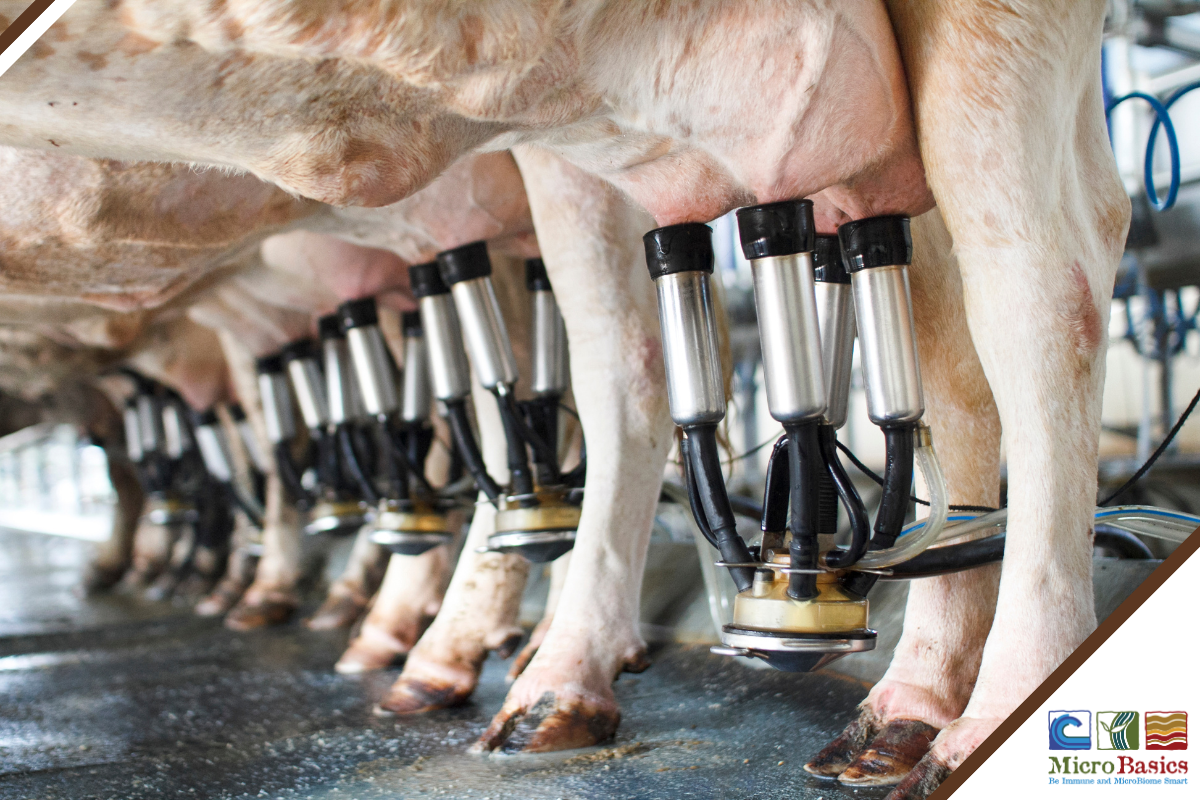Nutrient requirements change as the cow enters different stages of lactation. Health and well-being of the animal depends on meeting those needs and preparing her to transition into the next phase.
Let’s go over each phase and important management and nutrient needs that should be met.
Phase 1: Dry Period (Dry off up to 21 days before calving)
- This is a time of rest and repair for both the mammary gland and the gut.
- A balanced dry cow feeding program can increase milk production by 500-1500 lbs. (227-682 kg.) in the next lactation.
- Milk synthesis ceases.
- Calf is increasing in size and development.
- Body weight gain can occur. Limit weight gain to 1 lb.(.45 kg.) per day or half of a body condition score during the entire phase.
- Dry matter intake will vary from 1.8-2.5% of body weight.
- Do not depend on free choice consumption of vitamins and minerals. Include them in a formulated grain supplement package.
- Diet includes:
- 12-13% protein
- 60-80 grams of calcium (Jersey’s 15% lower)
- 30-40 grams of phosphorous (Jersey’s 15% lower)
- Limit salt to 1 oz. (28 g.)
- High quality forage including hay and corn silage.
- Support gut repair by feeding digestive enzymes, probiotics, prebiotics, and postbiotics.
Phase 2: Close-up Dry Cow Period (21-0 days before calving)
- Critical phase to prepare the cow for lactation.
- Increasing the level of grain in the diet provides more energy, changes rumen microbe proportions, and stimulates rumen papillae to elongate and increase in surface area.
- Dry matter intake (DMI) begins to drop. At calving DMI may be 15-30% less than intakes during Phase 1.
- Neonatal calf is growing quickly and requires more nutrients.
- Body weight loss may be starting. The risk of ketosis increases as fat is mobilized.
- Fatty liver development and higher levels of blood NEFA can begin.
- Diet adjustments include:
- Increase grain.
- Increase protein to 15-16%.
- Remove supplemental salt and buffers.
- Add inonic salts and niacin (6 grams per day).
- Continue to support and maintain the gut epithelial barrier by providing digestive enzymes, probiotics, prebiotics, and postbiotics.
- Consider rumen protected choline (15 grams).
Phase 3: Fresh Cow Period (Calving to 21 days post calving)
- Monitor and observe fresh cows daily on an individual basis to make sure they are healthy when moved to the high cow group.
- Monitor feed intake.
- Take daily body temperatures.
- Listen for rumen movements.
- Observe uterine discharge.
- Conduct ketone tests.
- The Fresh Cow ration should be an intermediate between the close-up ration and the high cow ration.
- In addition to a total-mixed ration (TMR), offer free choice long hay to help maintain rumen fill and function.
- Increase ration energy to allow for lower feed intakes.
- Limit added fat.
- Supplement yeast culture to stimulate fiber-digesting bacteria.
- Provide bacillus probiotics for pathogen control and production of digestive enzymes.
- Provide pre and post biotics to support healthy immune function and modulation of inflammation.
- Use a buffer to stabilize rumen pH.
- Drench propylene glycol (1/2 lb. [227 g.]) or feed calcium pro-pionate (1/3 lb. [151 g.]) to raise blood glucose.
- Supplement 6-12 grams of niacin to minimize ketosis.
Phase 4: Early Lactation (14-70 days post calving)
- Cows are approaching peak milk.
- Weight loss is occurring, and dry matter intake is lagging.
- Diet includes:
- High quality forages.
- Limited fat.
- Sources of rumen undegradable protein (RUP) and balanced levels of lysine and methionine.
- Increase grain energy gradually.
- Allow for adequate feed bunk space.
Phase 5: Mid-Late Lactation (70 days post calving to dry off)
- Peak milk and peak DMI have occurred. It is very important to optimize DMI.
- Mature cows should be gaining and replacing lost body weight. (1-1.5 lbs. [.45-.68 kg.] per day).
- Young cows should be growing.
- Increase forages.
- Target body condition score (BCS) is 3.25-3.75 at dry-off.
- Continue to support gut and immune health as the cow will experience stress and susceptibility to inflammation at dry off.
Management and adequate nutrition of the cow through all 5 phases of lactation is critical for optimal health and performance of the animal! At MicroBasics we know that all the little things add up to create big results. Support of the gut and immune system is necessary to maximize nutrient absorption and utilization. Utilize our flagship products Achieve and Surveillance iL to take feed efficiency and pathogen control to the next level on your farm!
Written by: Mariah Gull, M.S.
Sources: Feeding Guide by Mike Hutjens

